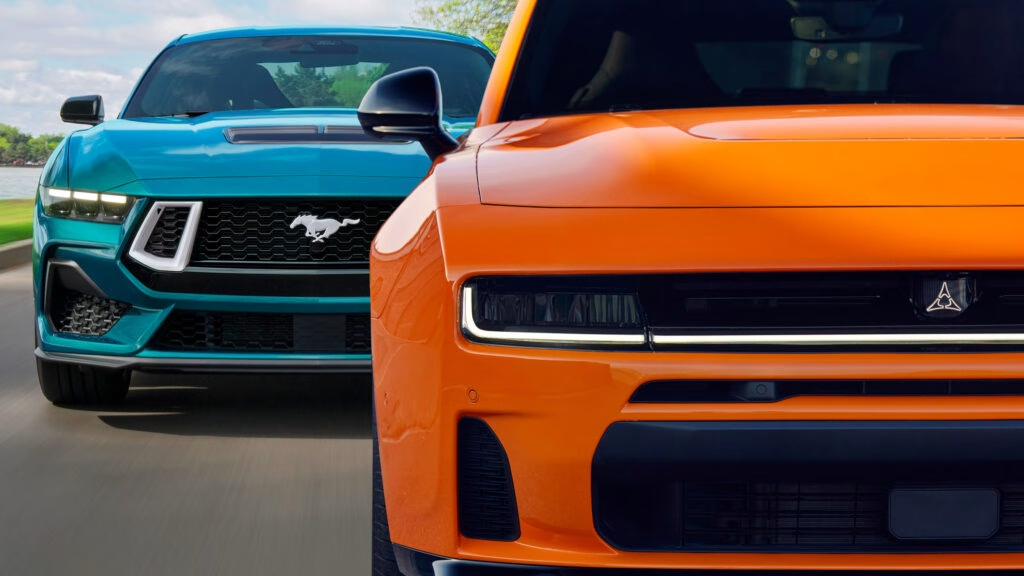Which Muscle Car Delivers More Thrills for Your Dollar: Dodge Charger Sixpack or Ford Mustang?
Muscle car fans have been waiting for Dodge to bring back a proper gas-powered Charger, and now, with the debut of the new Sixpack, the wait is over. But with Ford’s Mustang still holding strong as the classic American coupe, the question is obvious: which one deserves your spot in the garage? Let’s break down the real-world differences, quirks, and surprises between these two icons so you can make the call with confidence.
How Do the Engines and Power Numbers Really Stack Up?
Dodge’s new Charger Sixpack ditches the V8—at least for now—and instead packs a 3.0-liter twin-turbo inline-six, dubbed the Hurricane. The base R/T version puts down 420 horsepower and 468 lb-ft of torque, while the Scat Pack cranks it up to 550 hp and 531 lb-ft. That’s a serious punch, especially when you consider Dodge claims the Scat Pack will hit 60 mph in just 3.9 seconds. Not too shabby for a car that’s also built for comfort.
Ford, meanwhile, keeps things traditional with the Mustang. The entry-level model gets a 2.3-liter EcoBoost four-cylinder (315 hp, 350 lb-ft), but the real fun starts with the GT’s 4.6-liter naturally aspirated V8 (480 hp, 415 lb-ft). The Dark Horse edition squeezes out a bit more—500 hp and 418 lb-ft. While the Mustang’s V8 doesn’t quite match the Scat Pack’s raw numbers, it delivers that unmistakable V8 rumble. If sound is your thing, the Mustang’s Coyote V8 still wins hearts.
But here’s the twist: the Charger’s turbo-six delivers peak torque way earlier (just 2,500 rpm for the Scat Pack), so you get that instant shove in the back. The Mustang’s V8, on the other hand, needs to rev higher to hit its stride. In daily driving, that low-end grunt from the Charger could make it feel even quicker around town.
Manual or Automatic? And What About All-Wheel Drive?
This is where the two cars split the crowd. The Charger Sixpack comes exclusively with all-wheel drive and an automatic transmission. For some, that’s a deal-breaker—no manual, no sale. But there’s a clever trick: you can disconnect the front axle at the push of a button, turning the Charger into a rear-wheel-drive smoke machine when the mood strikes. Think of it as muscle car fun with a winter-friendly twist.
The Mustang, meanwhile, stays true to its roots: rear-wheel drive only, but you get your pick of a six-speed manual or a 10-speed automatic. No all-wheel drive here, so if you live where snow is more than just a rumor, the Charger might be the smarter year-round pick.
Which Body Styles Offer More Flexibility?
Dodge is playing the long game here. The new Charger replaces both the outgoing Charger sedan and the Challenger coupe, so you’ll be able to get it as either a two-door or four-door (the latter arriving in spring 2026). That’s a big deal if you want muscle car vibes but need to haul more than just your ego.
Ford keeps the Mustang strictly two-door, but does offer a convertible—a classic move Dodge doesn’t match. If you want to drop the top and soak up the sun, the Mustang’s your only option.
Is One Car Actually More Practical for Real Life?
Let’s talk space. The Charger’s wheelbase is a massive 121 inches—longer than some luxury sedans. That translates to real back seat comfort, even for adults. The Mustang? It’s tighter, especially in the rear. Ford’s own specs show the Mustang is down by over 8 inches in rear legroom compared to the Charger. If you regularly carry passengers, the Dodge is the clear winner.
Cargo space tells a similar story: the Charger offers 22.8 cubic feet of trunk space, while the Mustang manages just 13.3. However, the Mustang’s liftback design does make loading bulky items easier, so it claws back a few points for practicality.
Does Weight Tip the Scales in Favor of One Car?
Here’s the catch with all that Charger space: weight. The Charger Scat Pack tips the scales at a hefty 4,816 lbs. Compare that to a Mustang GT fastback at 3,827 lbs (manual) or 3,993 lbs (Dark Horse automatic). That extra mass means the Charger might not feel as nimble in the corners, and you’ll likely notice it under hard braking. On the flip side, the Hurricane engine’s efficiency could mean better real-world fuel economy, but official EPA numbers will tell the full story soon.
Which Delivers More Bang for Your Buck?
Price is often the final decider. The Charger Sixpack R/T starts at $49,995, while the Scat Pack comes in at $54,995. Both are thousands cheaper than their electric Daytona siblings. The Mustang, however, offers a broader range: the base EcoBoost fastback starts at just $32,320, and even a V8 GT undercuts the Charger at $46,885. The high-performance Dark Horse, though, jumps to $64,080 (or $69,075 in Premium trim), making it pricier than the most expensive Charger.
If you’re shopping on a budget, the Mustang’s entry-level models are hard to beat. But if you want max power and space without going electric, the Charger Sixpack Scat Pack is a compelling value.
What’s the Real-World Verdict for Muscle Car Fans?
Choosing between the new Dodge Charger Sixpack and the Ford Mustang isn’t just about numbers—it’s about what you want from your muscle car experience. If you crave V8 sound and a manual gearbox, the Mustang is still the purist’s pick. If you want all-weather capability, serious space, and turbocharged torque, the Charger Sixpack is a fresh, practical take on American muscle.
The big takeaway? Muscle car ownership isn’t about perfection—it’s about smarter adjustments. Start with one change this week, whether it’s test-driving both or just rethinking what you need from your next ride, and you’ll likely spot the difference by month’s end.

